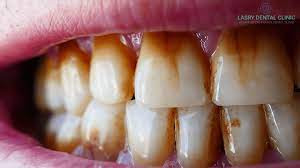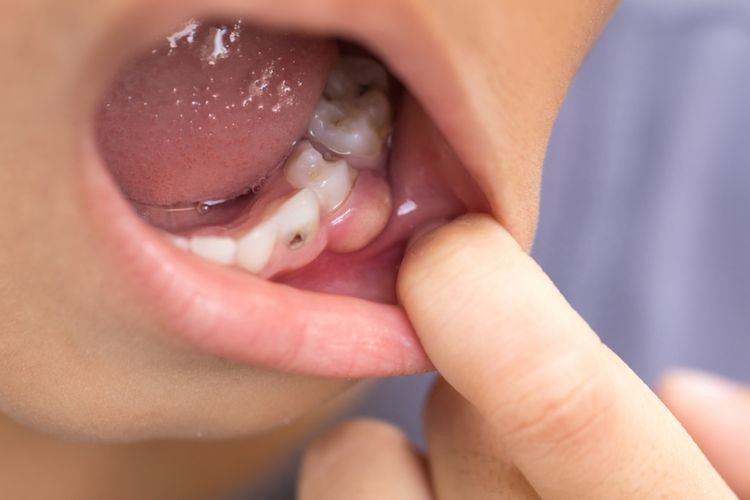Definition
Malocclusion refers to a condition characterised by the uneven or incorrect positioning of the jaw bones and teeth. The misalignment of teeth results in a disordered appearance. It can lead to issues such as overlapping teeth, crooked teeth, overbite or protruding front teeth, and other complications arising from uneven teeth. Malocclusion necessitates appropriate care and can have various repercussions if it is not well addressed. The effects encompass:
- Asymmetrical facial appearances lead to low self-confidence.
- Impaired ability to bite, chew, and speak
- Tooth damage results from inadequate oral hygiene caused by disorganised and misaligned teeth.
- Discomfort or spasms in the temporomandibular joint
- Gastrointestinal issues.
Types of malocclusion:
- 1st Grade
Malocclusion is classified as first-grade when there is an overlap of the upper teeth over the lower teeth in the mouth. Class 1 malocclusion is the prevailing type of malocclusion. In addition, minimal teeth overlap and typically no reports of bite issues.
- 2nd Grade
In second-degree malocclusion, the primary complaint is an excessive overbite. An overbite is a dental problem characterised by the anterior teeth in the upper jaw being positioned more forward than those in the lower jaw.
- 3rd Grade
Underbite is the complaint that manifests in cases of malocclusion in grade 3. Underbite is a dental condition characterised by the forward positioning of the front teeth in the lower jaw relative to the upper teeth.
Causes
The primary etiology of dental malocclusion is heredity, specifically when parents possess malocclusion or the same condition. The following causes may increase the risk of malocclusion in addition to genetic factors:
- Unusual jaw dimensions.
- The dimensions of the teeth are not proportional to the dimensions of the jaw.
- Possessing a congenital deformity characterised by a split in the upper lip.
- A cleft palate, also known as a gap in the palate or roof of the mouth, is present.
- Tends to engage in thumb-sucking behavior.
- Children who use bottles for extended durations
- Preschool-aged children who continue to use pacifiers beyond the age of three
- Mandibular displacement resulting from trauma
- Lack of dental growth
- Dental malpractice, such as inaccuracies in the placement of orthodontic braces or tooth fillings
- Mouth breathing is a phenomenon that can arise from airway problems.
- Neoplasms or nodules in the mandible or oral cavity
Risk factor
In addition to the aforementioned causes, several habits impact the anatomy and morphology of the jaw. One of these behaviours is the persistent practice of allowing children to use pacifiers and drink from bottles until they are three. Another habit that babies and young toddlers exhibit is thumb sucking, which could have a big impact. In addition to the aforementioned practices, additional elements can elevate the risk of malocclusion. These considerations include the following:
- Oral or maxillofacial neoplasm is the development of an abnormal mass or tumor in the oral cavity or jaw.
- Dental anomalies, such as supernumerary or hypodontia, anomalous tooth morphology, or tooth agenesis
- Improper oral hygiene
- Past medical record of dental or oral ailments, such as gingivitis or periodontitis.
- Respiratory tract disorders refer to medical conditions that affect the airways and lungs.
- Some congenital abnormalities, such as cleft palate or a gap in the palate, can occur at birth.
- Trauma can cause misalignment of the jaw.
Symptoms
The symptoms and signs resulting from malocclusion vary according to the extent of the malocclusion. Typically, the individual may have many symptoms and indications, such as:
- Asymmetric or non-parallel teeth
- The visage appears to have an uneven configuration.
- Inadvertently nipping your inner cheek or tongue
- Oral discomfort experienced during mastication and biting of food
- Impairments in speech production or communication abilities
- Inhale and exhale using the oral cavity instead of the nasal passages.
Diagnosis
The identification of malocclusion is determined during a standard dental checkup. The dentist will inquire about the patient's medical and dental records. The doctor will inquire about the patient's past use of pharmaceuticals, including prescription medications, supplements, and herbal remedies.
Another recommended evaluation is dental radiography. Dental X-rays are used to visualise dental caries and tooth anatomical features that are difficult to perceive or conceal. Dental radiographs can assist physicians in assessing the general state of the mandible. The identification of malocclusion can be facilitated by analyzing the outcomes of a dental X-ray, enabling the dentist to ascertain the specific type and extent.
To ascertain the most suitable course of action, additional investigation is required. This is why a general dentist will often recommend a specialist in orthodontics or oral surgery to improve the patient's smile, jawline, and overall facial symmetry.
Management
The management of malocclusion is dependent upon the degree of severity of the malocclusion. For cases that are not severe, there is no requirement for any specific measures. In pain complaints, the doctor will advise using analgesics, such as ibuprofen and paracetamol. Severe cases of malocclusion necessitate treatment from an orthodontist, a medical professional specializing in the aesthetics of the mouth, jaw, and face.
The treatment is contingent upon the specific type and severity of damage resulting from the malocclusion. Medical professionals may suggest a range of actions and treatments, such as:
- Orthodontic braces or dental braces
Braces are a commonly employed technique for aligning teeth. Braces are installed to correct dental misalignment and straighten the mandible. The installation process can be performed at any stage of life and is carried out on teeth and gums in good health. Moreover, placing braces necessitates multiple appointments with the dentist, contingent upon the teeth' state and the misalignment's extent. The type and duration of orthodontic braces will differ across individuals. Nevertheless, it typically takes an average of two years to achieve the intended outcomes.
- Dental extraction
Dental extraction is a procedure performed to improve the appearance of disorganised teeth. Dentists perform tooth extractions using local anesthesia to ensure the patient remains pain-free. Before the implementation of the treatment, the patient must furnish details about their medical history, including any existing conditions such as diabetes, as well as the medications they usually ingest. Furthermore, cleaning your teeth and oral cavity before the treatment is advisable by brushing your teeth and rinsing your mouth.
- Surgery
Jaw surgery can be conducted to rectify the dimensions and contour of the mandible. During the surgical procedure, the surgeon will implant plates, cables, or screws to provide jaw stability. Patients are prohibited from using orthodontic appliances, such as braces or aligners, to achieve dental alignment during the surgical intervention.
Complications
Complications can develop during malocclusion treatment. Among these compilations are the following:
- Dental damage
- Irritating treatment
- Treatment equipment like braces can cause gum inflammation and oral irritation.
- Speech and eating difficulties during treatment.
Prevention
Although malocclusion is usually inherited and birth-related, it can be prevented. Some examples are:
- Reduce bottle and dummy drinking
- Stop thumb sucking
- See the dentist regularly to detect malocclusion early.
Additionally, dental and oral hygiene must be maintained. Oral and dental hygiene are essential for preventing tooth decay and its progression.
When to see a doctor?
It is strongly advised to get a consultation with a dentist if you have malocclusions or teeth that are uneven or disorganised. Regular dental check-ups, conducted at least every six months, can identify dental issues in their early stages, including malocclusion, enabling prompt treatment. Therefore, early detection of a problem increases the likelihood of a successful recovery from the disorder.
Looking for more information about other diseases? Click here!
- dr. Yuliana Inosensia
Cleveland Clinic. (2021). Malocclusion: Classes, Definition & Treatment. Retrieved 26 January 2023, from https://my.clevelandclinic.org/health/diseases/22010-malocclusion
Int J Oral Sci (2018). Common dental diseases in children and malocclusion. Retrieved 26 January 2023, from https://pubmed.ncbi.nlm.nih.gov/29540669/
MedlinePlus. (2022). Malocclusion of teeth. Retrieved 26 January 2023, from https://medlineplus.gov/ency/article/001058.htm
Healthline (2022). Malocclusion of the Teeth. Retrieved 26 January 2023, from https://www.healthline.com/health/malocclusion-of-teeth












